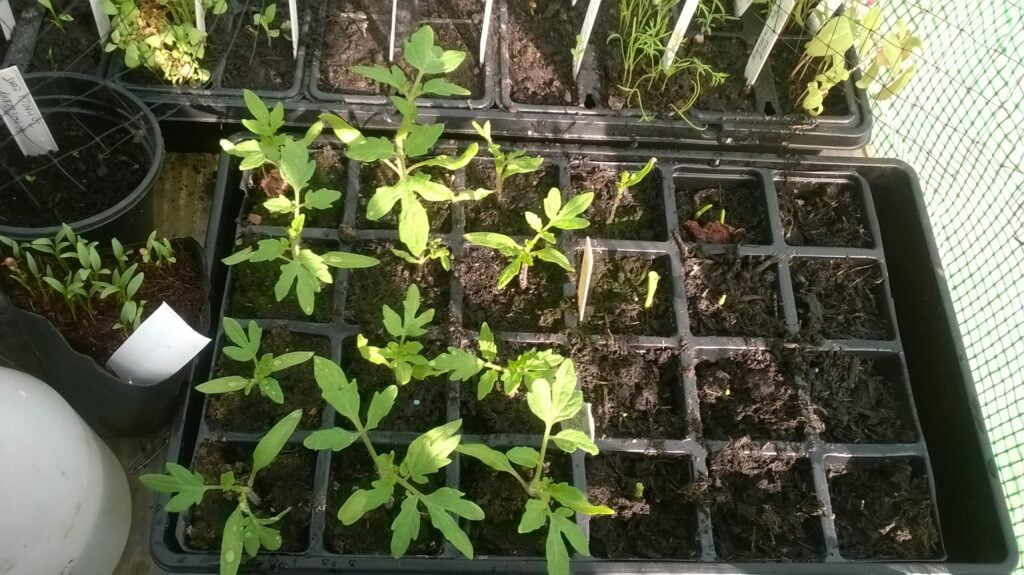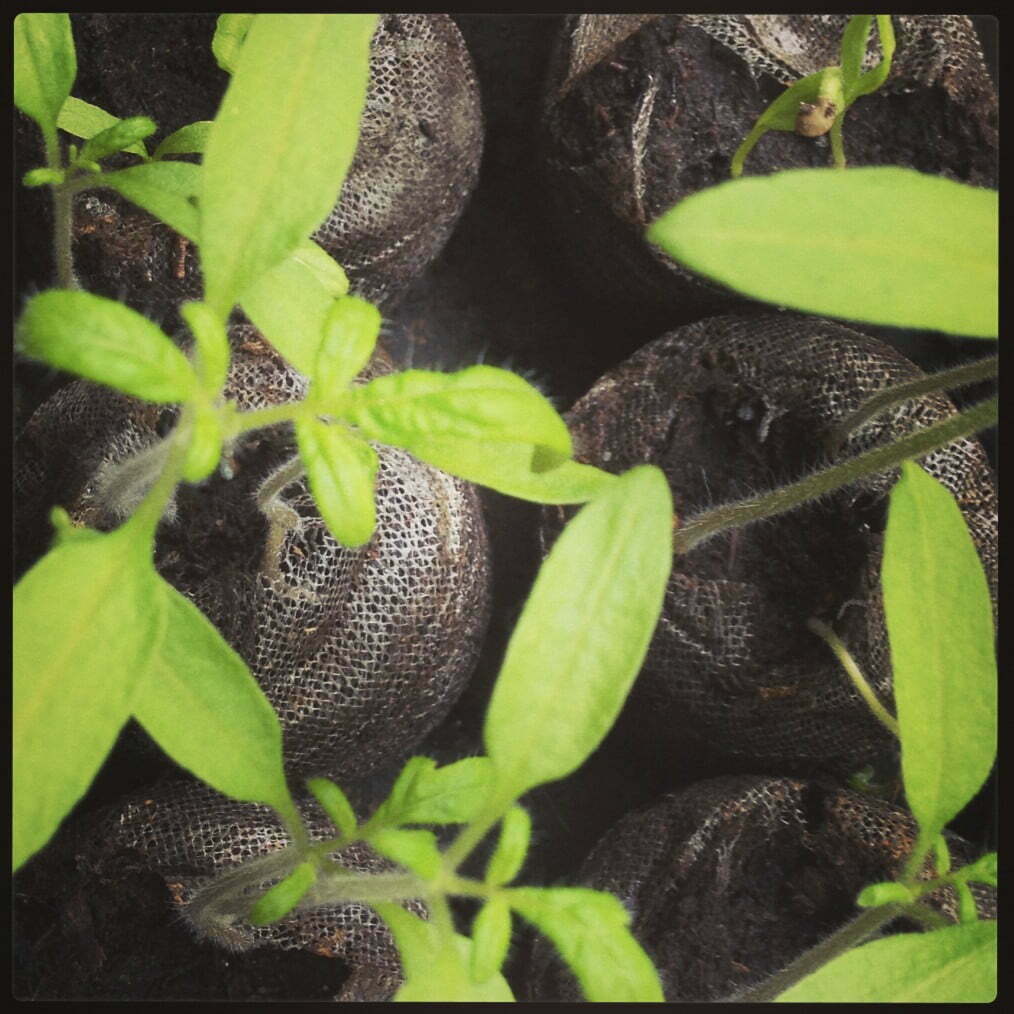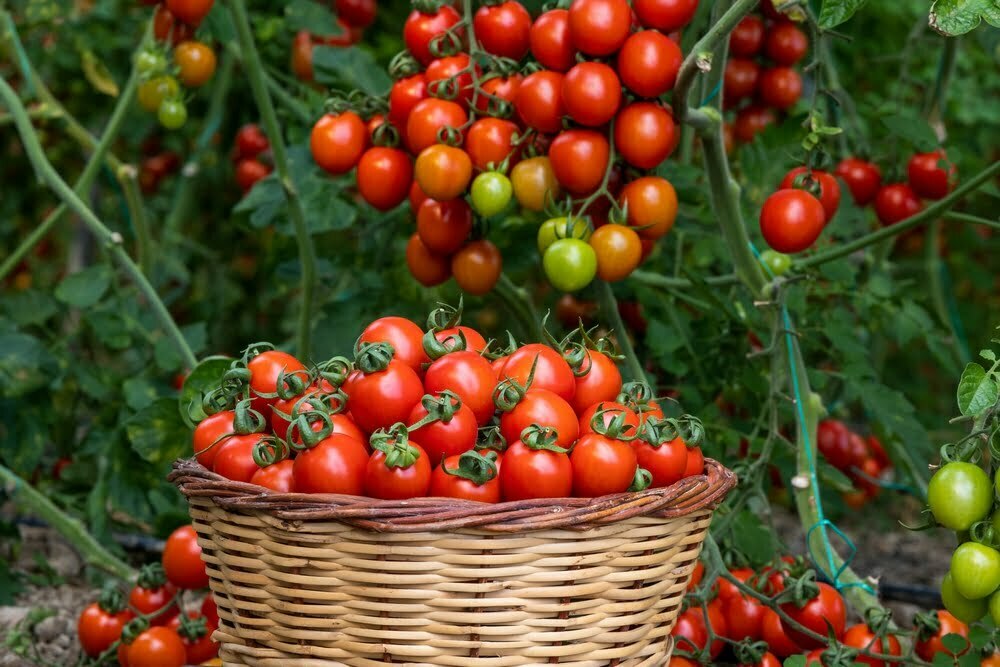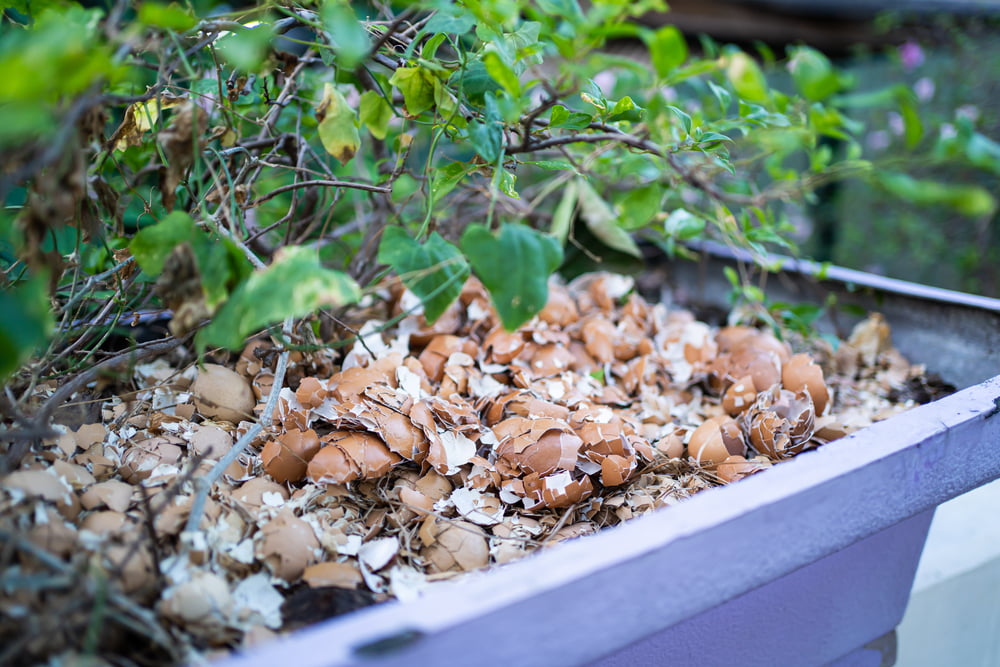In this Article
Tomatoes are one of the most popular plants to grow at home, as the homegrown tomatoes are so delicious; however, if you live in an apartment where you don’t have a garden, can you actually grow tomatoes in pots? The most common practice is to grow determinate tomatoes in pots rather than cordon tomatoes. You can grow these in hanging basket, wall containers, medium sized pots. Bush tomatoes in pots are much easier to handle as they don’t need the sideshoots removed, cherry tomatoes are the most popular to grow in pots. You can grow tomatoes that produce small fruit like tiny grape tomatoes, or medium sized plum tomatoes; the choice is huge when you grow your own tomatoes from seeds.
Grow indeterminate tomatoes in large pots, against a sunny, warm wall, this give additional support and heat for the tomatoes in the summer months.
Tomatoes can be grown quite successfully in pots, however, in most cases, the yield that you will get from the plants will be reduced compared to tomato plants that are in the garden. The main reason for this is that the potted tomatoes do not have quite as much access to nutrients or space to grow upwardly, usually because the support structures that can be placed in a pot are limited in size.
To minimise this effect, it is recommended to grow tomatoes in pots with a diameter of at least 14 inches and ideally larger if possible. At that size there is sufficient volumes of compost to ensure that there is adequate nutrition for the plant.

How to prepare pots for growing tomatoes
To ensure that you get the best possible results from tomatoes planted in pots the most important thing is to ensure that the growing medium is good quality. Generally, we do not recommend using garden soil in the pot; it is far better to use rich garden compost or potting soil. The reason for this is that compost contains a wide range of nutrients that are ideally suited for supporting the growth of tomatoes.
The bigger pots will provide more room for the tomatoes to grow, and as you can add more compost the tomatoes will have more nutrients. You can use large containers for growing tomatoes but make sure to drill drainage holes in the buckets and containers.
In addition to adding compost, we also recommend that water crystals be added to the soil to improve moisture retention if you live in a relatively dry climate. The addition of water crystals will help to reduce the frequency of watering required, however, in places such as the UK this is typically not a huge issue.
When to plant tomato seedlings
Tomato plants are frost sensitive and do best when the conditions are relatively warm. To take advantage of the entire tomato growing season, it is best to sow tomato seeds approximately 4 weeks prior to the last frost of the season. For the seeds to germinate, the seed trays need to be placed in a relatively warm location.
To prepare the seed trays for planting, fill them up with a good quality seed potting mix and firm the soil into individual plugs. Avoid the temptation to use garden soil, which is not ideal for growing tomatoes in pots, because it can often contain weed seeds and other pathogens that can cause problems later on after the tomato seeds have germinated and the seedlings emerge.
Keep the soil moist at all times at this stage as the young tomato plants can dry out quickly, especially if you use a heat mat.

When planting the tomato seeds into the soil, place 2 to 3 seeds per cell in the tray at a depth of approximately a centimetre. Tomatoes will typically take around 7 to 14 days to appear in the seed trays. You can speed up the germination by soaking the seeds overnight or by placing the seed trays on a heat mat or a heated propagator, this is helpful not just for the tomato seeds but for the growth of the young plants too.
If you get more than one seed per cell germinating, then remove the weaker seedlings, leaving one plant per cell to develop in the cell. Or you can gently prick the seedling out and repot it in an other seed cell or small pot. Plant tomatoes in medium sized pots from the start to avoid the need for repotting again and again.
Typically, tomato plants will take approximately 6 weeks to reach a sufficiently large size to be able to be planted out into the garden. In most cases, the plant will have reached a height of 4 to 6 inches tall.

Transplanting tomato seedlings into a pot
Once the tomato plants have 4 – 5 pairs of true leaves and are ready to be planted out, they need to be placed into the centre of the pot at a depth approximately equal or deeper the depth that they were growing in the original seed tray. But, tomato seedlings will tolerate being planted much deeper into the ground as the roots will develop from the lower parts of the stems if they are submerged in the ground.
Plant tomatoes which are too leggy deeper in the potting mix, extra roots will grow from the stem and the tomato plants will get stronger.
However, it is important to note that tomato plants should only be planted out into the garden when there is no risk of a late frost. If you are in the situation where the tomato plants are ready before the weather is favourable enough there are a couple of different things that you can do.
Option one is to repot the plant into a smaller pot to grow in and keep it indoors until the conditions become favourable or option 2 is to use a cloche over the plants.
Cloches something that is highly recommended in places like the UK where the summers are relatively cool as they will increase the air temperature around the plants by between 5 and 10C in most cases, which will have a significant effect on the growing plants.

Protecting seedlings against pests
Once the seedling have been planted in the pot, it is important to protect it from pests such as slugs and snails, which have been known to wipe out batches of young seedlings overnight. To provide protection, there are a few different options that are commonly used by gardeners.
Option 1 is using snail pellets which can be bought commercially from your local garden centre. When applying these snail pellets, ensure that they are sprinkled all the way around the plant to ensure that the snails cannot find a pathway through to your plans.

Option 2 is to use things like crushed eggshells and coffee grounds. These materials are relatively gritty and not something that slugs and snails like to crawl over. However, when applying them need to make sure that you have a really thick layer of eggshells to make sure that the slugs and snails don’t get through.
Option 3 is to use copper bounding around the edge of your pot as slugs and snails will not crawl over the copper to get to your plant.
Option 4, which was mentioned in the previous section, is to use cloches over the plants. This is an extremely effective method of stopping slugs and snails, and has the added advantage of increasing the temperature of the soil. This also reduces the chances of slugs and snails causing problems because they are not a huge problem once the tomato plant increases in size a bit.
Providing support structures for your tomatoes
Providing a support structure for the tomatoes is critical to ensure that you maximise your harvest. There are a couple of options here, including purchasing tomato structures from your local garden centre designed specifically for this purpose. The advantage of these types of structures is that they are simple and easy to erect and only take it matter of seconds.
However, the disadvantage of many of the tomatoes growing structures is that they are often too short to support the growth of indeterminate varieties of tomatoes, which can reach up to 10 feet tall at the height of summer.
The other option sometimes used in greenhouses is to support the tomato plant with a guide string which needs to have one end placed below the seedling at the time it is planted. The other end needs to be tied to the top of the greenhouse. You can grow tomatoes direct in the greenhouse soil or use containers.
The guide string can then be wound around the tomato plant to keep it upright. However, the disadvantage of this is that the plant cannot be moved once the structure is in place.

Caring for your tomato plants
Once the tomato plants are in the pot and the support structure is in place, there are still several things that you do need to do to ensure that the plant grows consistently. The first thing is to ensure that you water the plant regularly to ensure that the soil remains moist. Generally, pots should be watered two to three times a week, depending on the ambient temperatures.

Pinch out sideshoots
The other important job to do regularly as your tomato plant increases in size is to pinch out any side shoots. The side shoots are the new shoots that appear on a 45-degree angle between the main stem and the laterals with leaves on them.
Feeding tomato plants
In order for the tomatoes growing in pots, to have optimum nutrients so they can produce delicious tomatoes you will have to feed them with good quality liquid tomato feed. You can even make your own liquid feed from nettles.
Container tomatoes can produce masses of fruits if you feed them with enough nutrients throughout the entire growing season.

Watering tomato plants
Regular watering tomato plants is even more important when you growing tomatoes in pots and containers, it will help prevent from blossom end rot. A twice a day schedule is highly recommended in hot weather and when the tomatoes flower, this will make sure the flowers are set properly and the healthy plants will produce delicious tomatoes.
This is important job because if you leave a tomato plants to its own devices they will produce masses of sideshoots that will quickly become a tangled messed and reduce your overall fruit production. This is because the plant is focusing on the production of foliage rather than fruit and flowers production. Typically, you will need to do this job every two to three weeks to ensure that you remain on top of this issue.
When you come to remove the side shoots this is also a good time to tie any new growth into your support structure to ensure that the plant remains upright.

Pollination
The other important aspect to consider is the pollination of the flowers if you are growing tomatoes in pots indoors or in a greenhouse. Due to the lack of insects you must get involved in pollinating the flowers if you want any fruit.
The easiest way to do this is to use a fine artist brush to transfer the pollen between flowers. To do this take the brush and gently place it in the centre of the flower and rotate the brush to cause the pollen to move around in the flower and then move on to the next flower. This is a job that you will need to do on a regular basis if you are growing indeterminate varieties as they will continually produce flowers throughout the season.
If you are not keen on spending time pollinating flowers there are also hormonal sprays that can be applied to the flowers to pollinate them; these are generally easier and quicker than hand pollinating and work relatively well.
To optimise the number of ripe fruits that you get throughout the season from the tomatoes, it is important to remove the top of the tomatoes around 4 weeks prior to the first frost of the season or if they are in pots a bit later. Doing this will help the tomatoes to concentrate on ripening the fruit that it already has rather than growing more foliage and new flowers and fruit that will not ripen.
At the end of the season, when the first frost has hit the remainder of the green fruit on the plant can be removed and placed on a windowsill to ripen. Or if you have space inside you can move the growing tomatoes in pots in the greenhouse or conservatory for a bit of warmth, this way the green fruits will more likely ripen on the plants. Generally, those fruits that are smaller than a large marble will typically not ripen at all because they are simply too small and young.

